Today, the ten ships of the Nimitz class are the backbone of the US Navy's carrier groups, the most fearsome collections of naval firepower ever created. They operate what are essentially medium-sized independent air forces, and the fact that the last unit will leave service close to a century after planning began for the leader is a testament to the quality of the design.
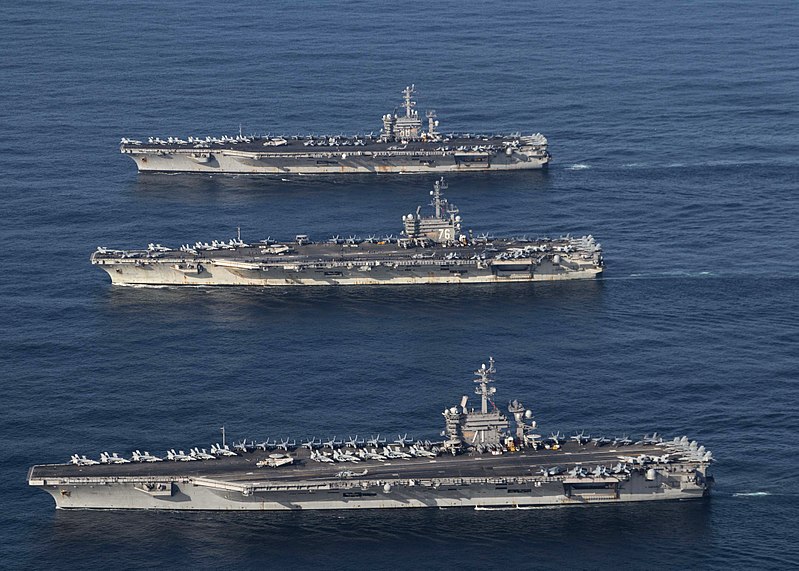
Three Nimitzs operate together
The Nimitz class has its roots in the mid-60s, as questions were asked about the shape of the future US carrier force. From the late 40s onward, the main mission of the US carrier fleet had been nuclear strike, but the arrival of Polaris meant that this was no longer enough to justify the budget for such expensive ships. Instead, the experience of Vietnam would provide the basis, as carriers operating in the South China Sea provided a significant fraction of the air effort during the war. But that would mean a rather different kind of carrier, optimized for a sustained conventional war instead of a short nuclear one. This was most visible in the magazines planned for the new carrier design, which were considerably larger (and thus more vulnerable) than those of their predecessors, but which would allow the new ship to operate for longer between replenishment.

Then-President Ford speaks at the commissioning of the Nimitz
The other question was what would propel the new ships. Nuclear power had proven quite successful on Enterprise, bringing unlimited endurance, more room for fuel and stores for the air group, and no stack gasses to corrode planes on deck. But Enterprise had required eight reactors, each of which had to be staffed with highly-trained personnel, and the next two carriers had reverted to burning oil. Developments in reactor design meant that by the mid-60s, a reactor was available which produced four times the power of those aboard Enterprise, allowing the new ship to get by with only two reactors. Given that crew requirements were essentially flat with the number of reactors, this was enough to tip the economic case back in favor of nuclear power for the new ship, which was laid down in 1968 and named after Chester Nimitz, who had led the US Navy throughout the Pacific War.
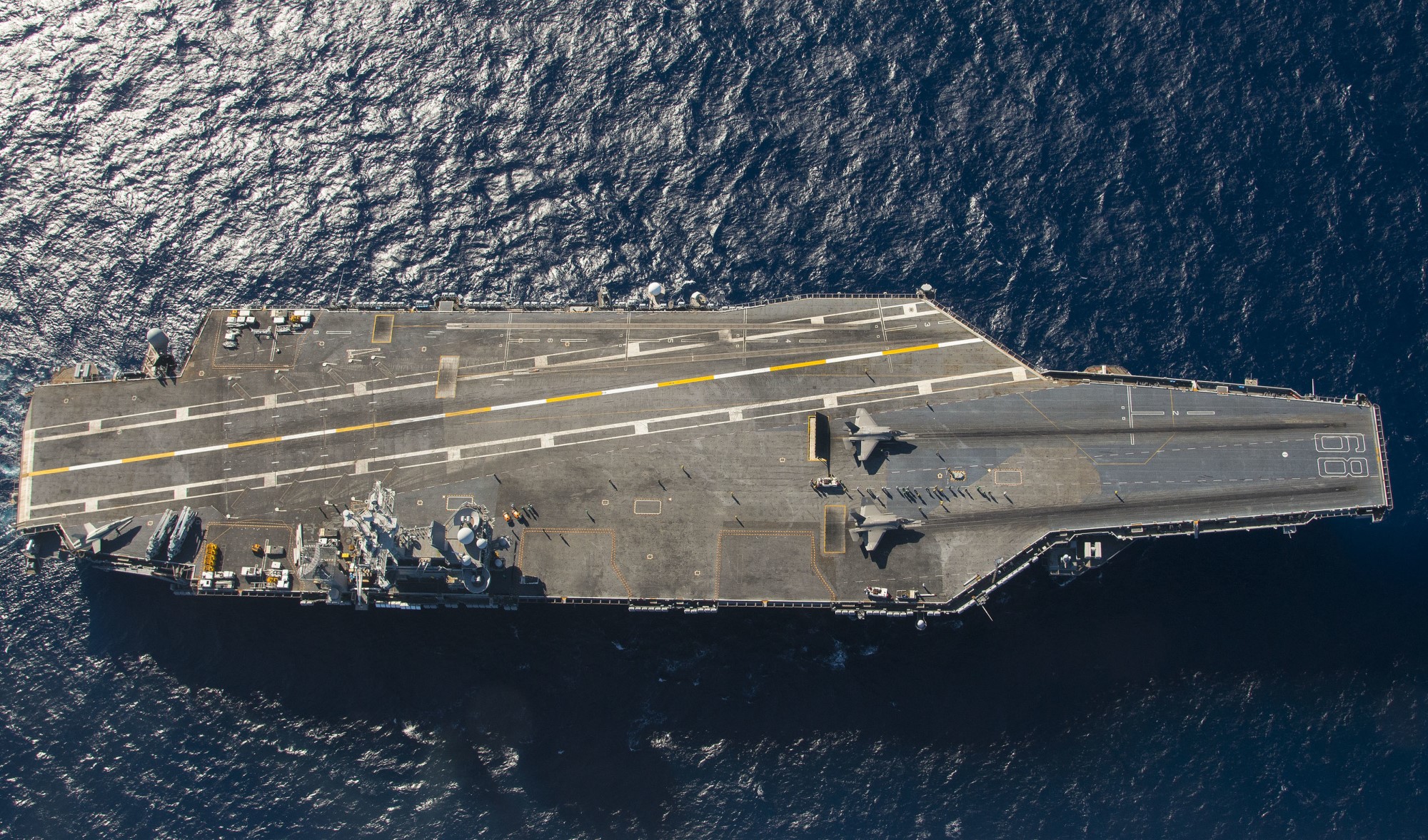
A deck view of Nimitz showing catapults, elevators and arrestor wires
The resulting ship was 1,092' long overall and displaced about 91,000 tons fully loaded, with an air group of about 90 planes flying from her 4.5-acre flight deck. Fixed-wing airplanes are launched using four steam catapults, two in the bow and two on the port side, in the path of the angled landing area. Any airplane which fails to snag one of the four arresting wires aft simply flies off to try again while operations continue elsewhere on deck. In theory, the forward catapults can even be used while planes are landing, although in practice a carrier does one or the other. Below the flight deck is the hangar deck, where airplanes are sent for maintenance, and it is reached by four elevators, two on either side of the landing area aft and two more on the starboard side forward of the island. The island itself is home to ship control facilities and most of the ship's radars and communication facilities, as well as the areas that control operations on the flight deck. Keeping all of this going requires a massive crew, with about 3,100 sailors permanently assigned and another 2,600 embarked from the air wing.
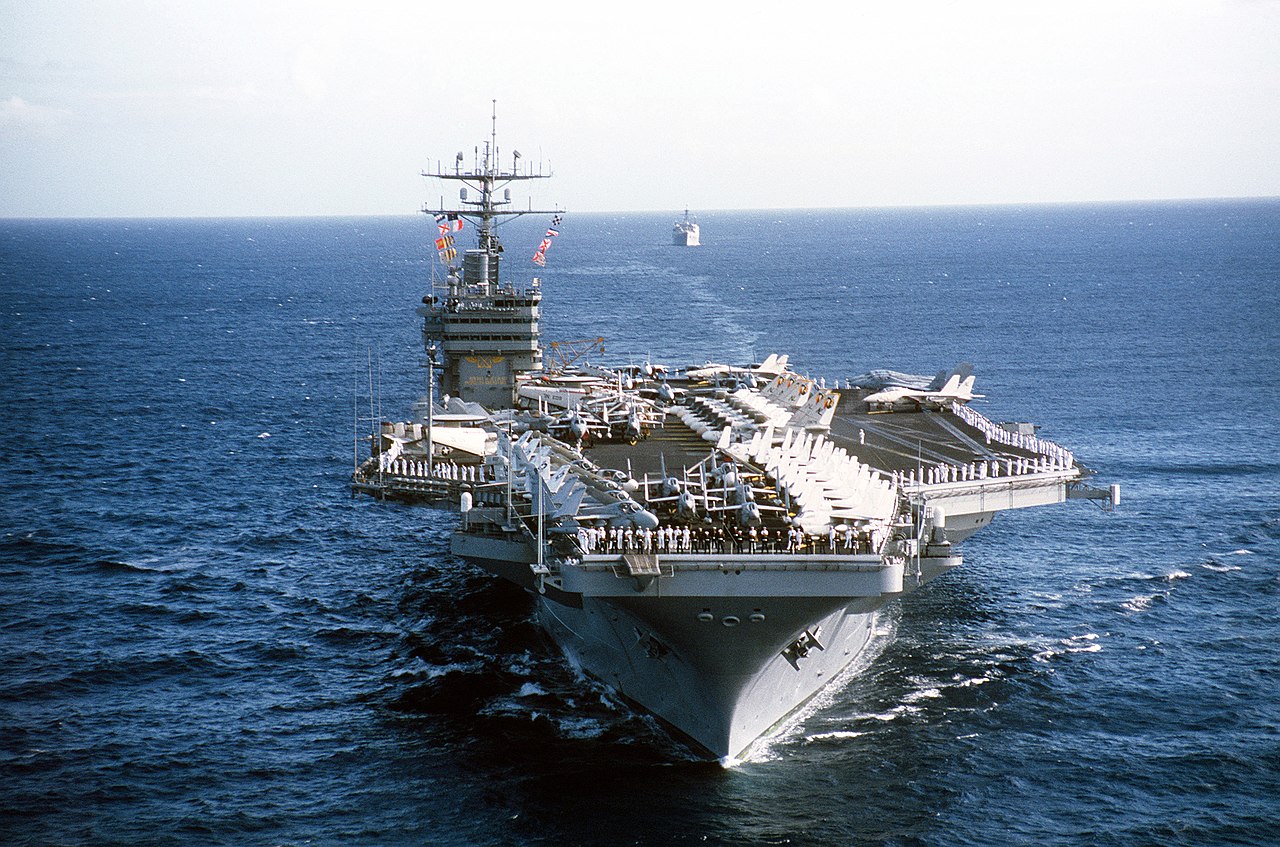
Carl Vinson shortly after entering service
The initial plan was to follow Nimitz, which commissioned in 1975, with two sisters at two-year intervals, but the budget shortfalls of the late 60s meant that it was three years before Dwight D. Eisenhower was ordered and another four years before the order for the third unit, Carl Vinson, was placed. Even within this block of ships, the design was already beginning to evolve. Notably, Nimitz had been fitted with three "bridle catchers", small projections ahead of the forward catapults that caught the ropes used to secure older aircraft to the catapult. More modern aircraft didn't need bridles, so Eisenhower and Vinson had only one bridle catcher each, while later ships had them removed entirely. Vinson was the first unit of the class to be fitted for anti-submarine warfare while under construction as part of the plan to consolidate what had been separate fleets of attack (CVA(N)) and anti-submarine (CVS) carriers, although the other two ships were refitted shortly thereafter. Vinson also saw the BPDMS Sea Sparrows of the first two units replaced by NATO Sea Sparrow, as well as the addition of Phalanx.
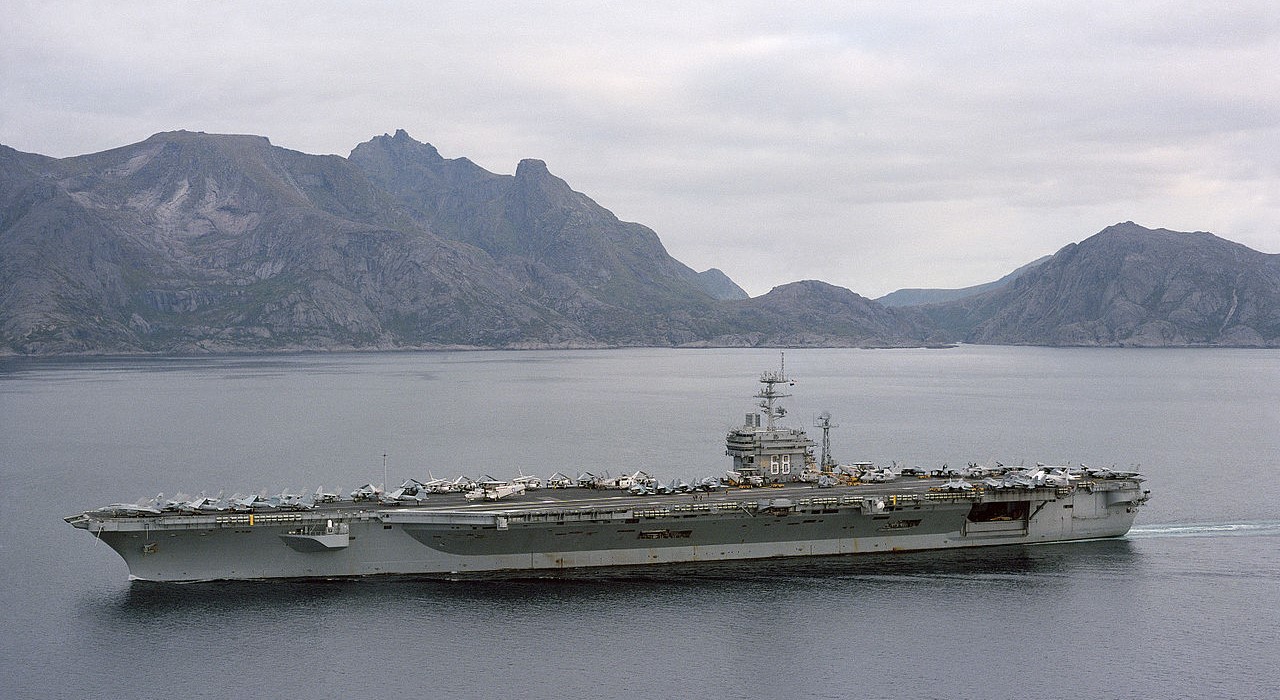
Nimitz off the coast of Norway in 1986
In the late 70s, there was considerable debate over the future of the carrier fleet. Most in Washington wanted to focus on the possibility of land war in Western Europe, which would reduce the Navy to the forces required to protect the Atlantic sea lanes and leave no place for the supercarriers. But by the end of the decade, the Navy had built the case for its role in such a war, and one of the first fruits of this new Maritime Strategy was another nuclear carrier, ordered in 1980. To get this ship into service as quickly as possible, she would be a fourth Nimitz, named Theodore Roosevelt. Modifications included the deletion of bridle catchers and the addition of Kevlar splinter armor and better firefighting capabilities thanks to the lessons of the Falklands War.
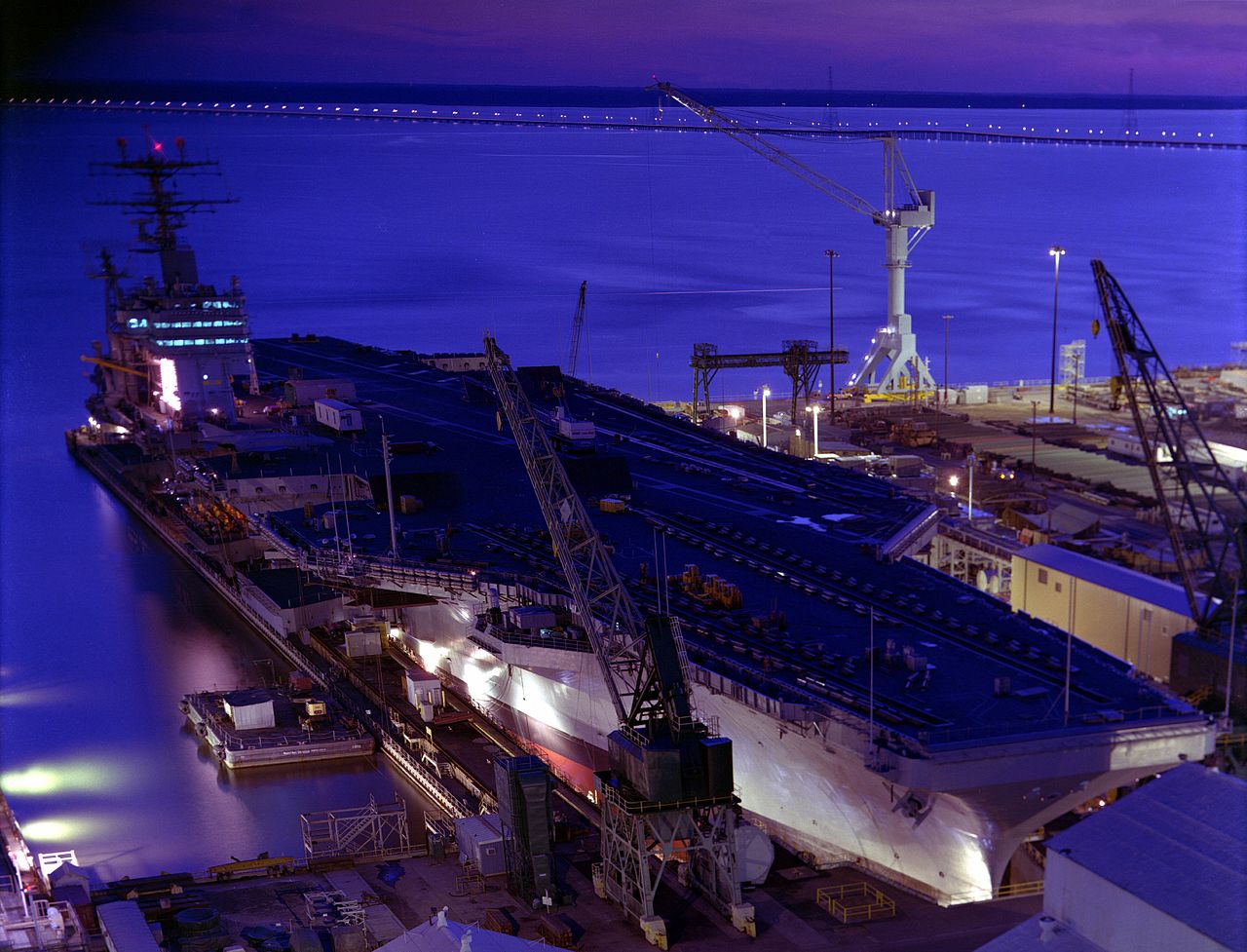
Abraham Lincoln in drydock
The Reagan Administration embraced the Maritime Strategy, and ordered four more carriers, two (Abraham Lincoln and George Washington) in FY83 and two (John C. Stennis and Harry S Truman) in FY88. The need to avoid delays and drive down costs meant that these were also Nimitzs, with minor modifications to each ship, mostly in the electronics fit, to improve capability and drive down cost. A notable addition to the second pair was the Rolling Airframe Missile, which provided an extra layer of defense between Sea Sparrow and CIWS.
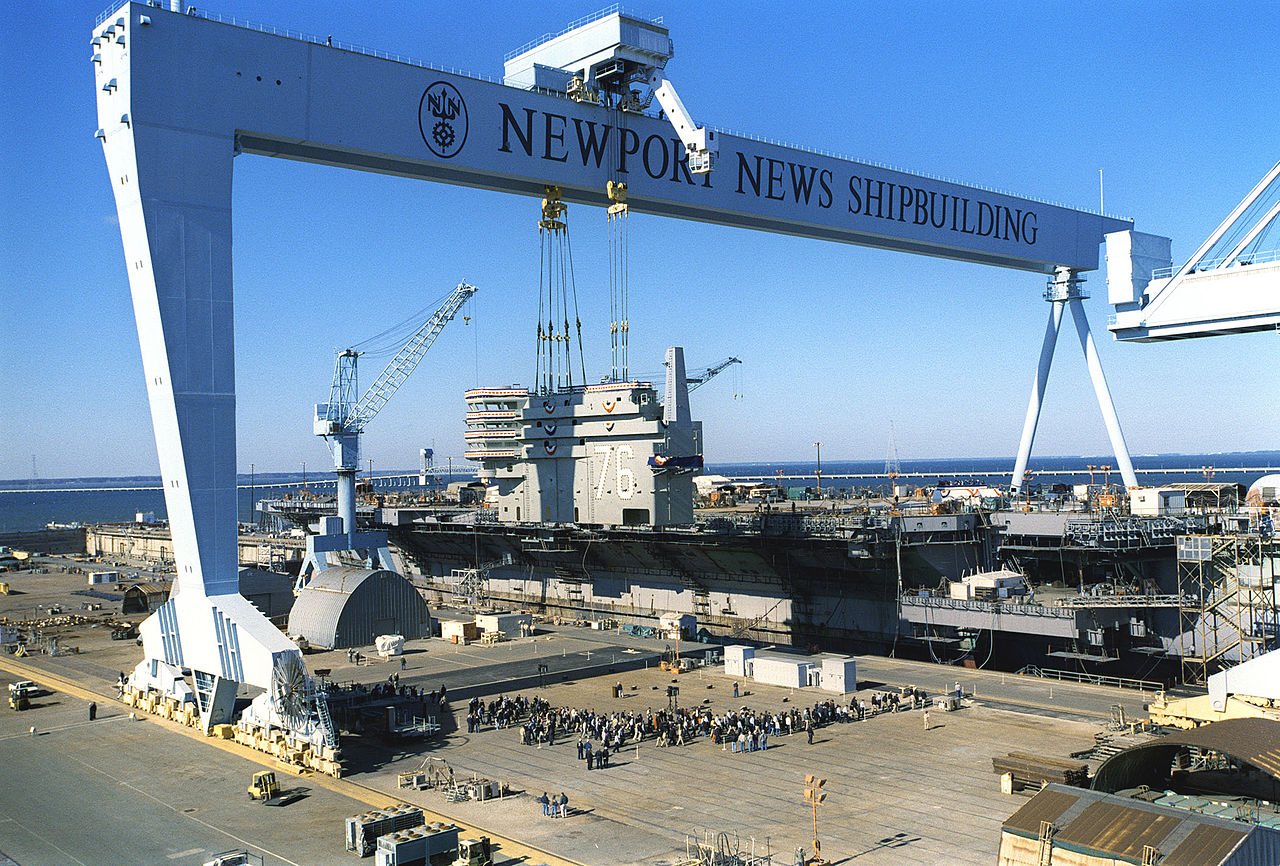
Ronald Reagan's island is hoisted aboard during construction
The last two ships, Ronald Reagan and George H W Bush, were ordered after the end of the Cold War to keep the fleet up to strength, and they took advantage of a more substantial redesign to try and reduce lifetime costs. Notable changes included a slight realignment of the landing area, a general rearragement of the flight deck to improve aircraft flow, a reduction in arrestor wires from four to three, a redesigned island and more aviation fuel. Originally, plans were for Bush to incorporate a number of upgrades leading into the next generation of carrier, but a desire to reduce risk and cost for her resulted in all upgrades being concentrated on the next ship, CVN-78, with predictable consequences.
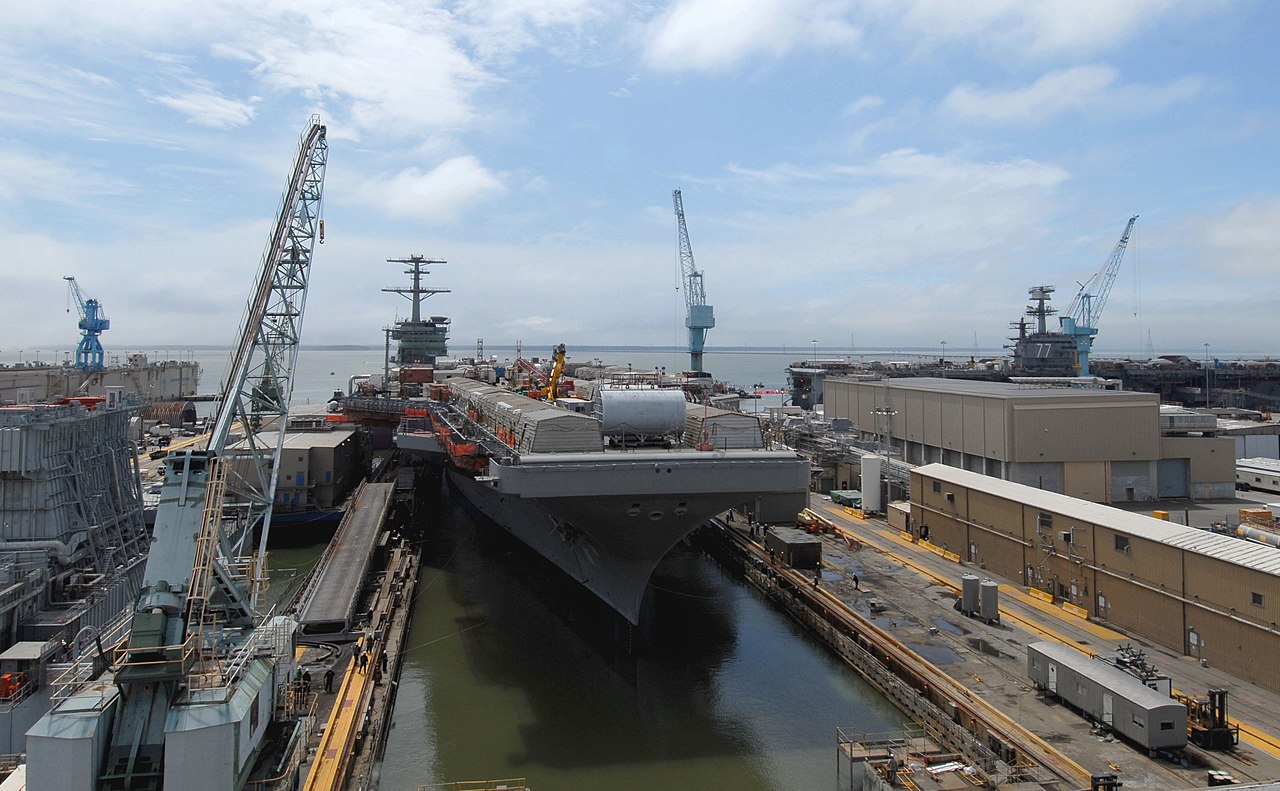
Vinson is floated out of drydock after her RCOH
As is typical with warships, the Nimitzs have been upgraded throughout their service lives. Some of these upgrades take place in the course of ordinary refits, but the reactor, while it provides effectively unlimited operational endurance, does need to be refueled after about 25 years. This is done in a procedure known as Refueling and Complex Overhaul (RCOH), which takes 3-4 years to complete and is also used to perform a comprehensive refit of the ship, including work that would be uneconomical in a smaller overhaul. One of the more notable upgrades on the earlier ships was to the reactor cores. The early units could produce only 260,000 SHP, which was sufficient to drive the ships at 31.5 kts or so. But the four-shaft steam plant, shared with some of the later oil-burning carriers, could accept 280,000 SHP, and the reactor cores were subsequently upgraded to provide the extra steam, helping to offset the weight growth the class had experienced over the decades.

An F-4 and an RF-8 onboard Eisenhower
But the real secret to the longevity of the Nimitz design is the fact that its primary weapon is the air wing, which can easily be swapped out with minimal impact on the ship. When Nimitz first deployed, she carried two squadrons of F-4 Phantoms, a squadron of A-6 Intruders, two of A-7 Corsairs, one of RA-5 Vigilantes and one of EKA-3 Skywarriors, supported by E-2 Hawkeyes and SH-3 Sea Kings for rescue work. Of these types, only the E-2 remains in service today, and it has been the subject of two rounds of major upgrades. The rest all left service by the mid-90s, and in most cases not only they but also their replacements have been retired. Today, the standard air wing is four squadrons of 12 fighters each, typically 3 of F/A-18Es and one of F/A-18Fs, although the F-35C has begun squadron deployments. These are backed up by an electronic squadron with five EA-18G Growlers, an early warning squadron of 4 E-2D Hawkeyes, a detachment of C-2 Greyhound or CMV-22 Osprey delivery aircraft and two helicopter squadrons, one of MH-60R ASW helos and one of MH-60S utility birds, some of which are often detached to other ships in the carrier group. While the new air wing is smaller, many of the aircraft in the old airwing were there because of poor serviceability, and modern precision weapons offer the ability for fewer aircraft to hit more targets than ever before.
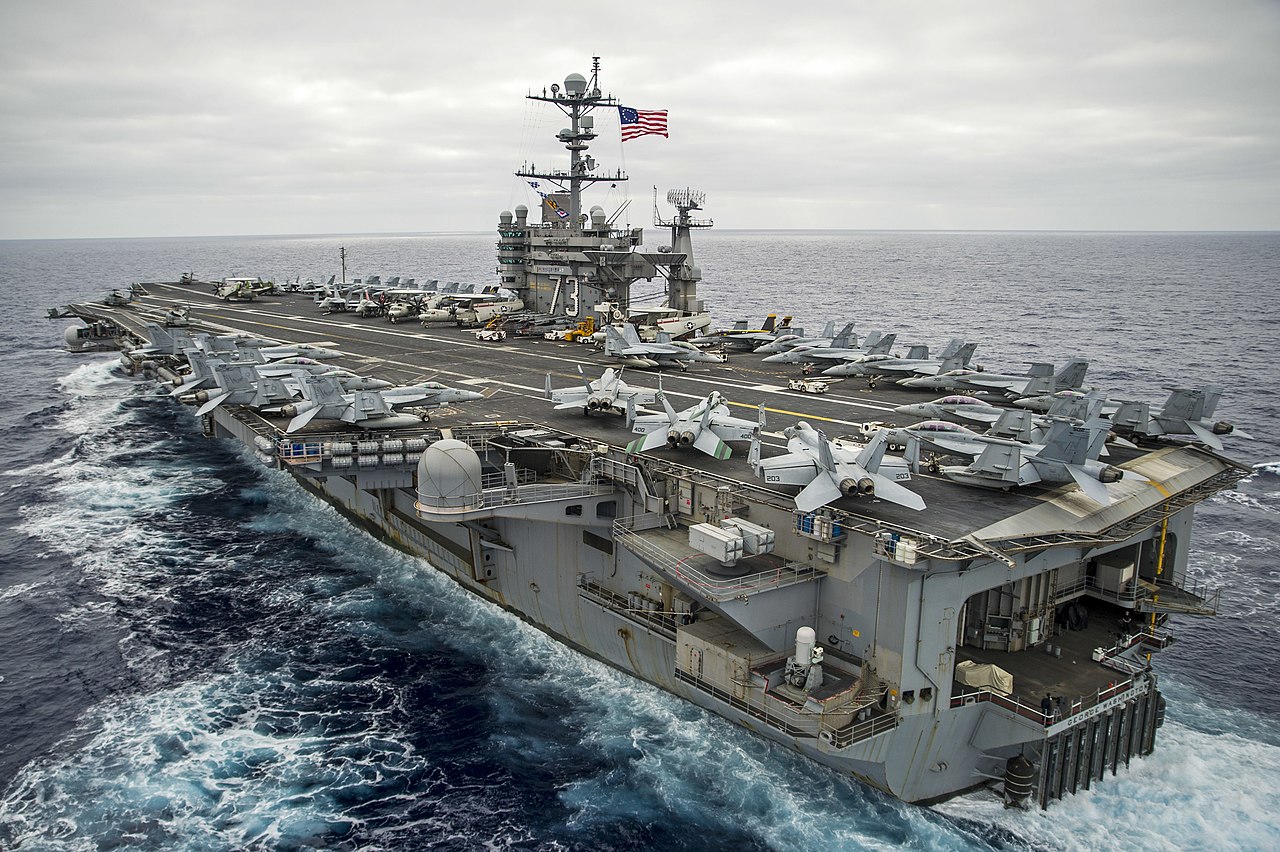
George Washington displays the modern, mostly-Hornet air wing
Today, Nimitz herself is in the twilight of her career, with retirement scheduled in only a few years, while her youngest sister, George H W Bush, will operate until around 2060. A further testament to the design is that her successor, the Gerald R Ford class, is built on largely the same hull and with the same general configuration. We'll take a look at it next time.

Comments
"Today, Nimitz herself is in the twilight of her carrier": the most apropos of Freudian slips, but surely "career."
EA-18G Grolwers -> EA-18G Growlers
Cool article but I feel you did not engage with the most important question: What is the plural of "Nimitz"? You have "Nimitzs" but that cannot be right. Surely it should be "Nimitzen", "Nimitzoi", or "Nimitzes".
Huh... I wonder if that was the show-the-flag visit where my father took me to go on board? I don't remember anything about it except that the line was long and very cold, but I'd have been about the right age for it to be 1986.
Nimitz is a Germanised form of the slavic *němьcь, meaning foreigner (i.e. German). So it's Nimitza if there's two of them and Nimitzi for three or more.
I love this website.
@Rolf
I think that particular photo is of her operating up in the Lofoten area during Northern Wedding 86. But she could have easily done a port visit further south during that deployment.
As for grammar, I'm going to stick with what I did here, and not care too much about it. If pressed, I'd say that Nimitzes is the best option.
"a procedure known as Refueling and Complex Overhaul (RCOH), which takes 3-4 years to complete"
I get that rushing the job is a particularly bad idea with nuclear tech, but still 3 years seems a lot. Does swapping the fuel rods take that long, or is the time mostly spent working on other things?
Getting to the nuclear fuel rods requires taking a bunch of stuff apart, which gives the Navy an excuse to do a lot of other work, too. I don't know exactly where all the time goes, or how fast we could do it if we were trying to handle it as quickly as possible. Also worth pointing out that modern reactors are not designed to be refueled as easily as older ones, because modern cores last longer and we don't expect to do it every year or three like they did in the 50s.
Few questions about the last image:
What are those blue and white propane tank looking things on platforms around the deck edge?
What are the black bars at the stern waterline?
And does that phalanx only have a 45 degree arc of fire? I didn't realize they were so low and tucked away like that.
No idea about the tanks or the bars. Maybe someone else does. And I think the Phalanx will have a bigger arc than 45 or even 90 deg. It's far enough out to get a fair bit of arc across the stern, and the cutout under the ESSM launcher looks positioned to let it fire forward.
Re: the propane tanks, could they be life rafts?
The life rafts are the sort of pill things at the aft end of the angle deck overhang, just forward of the dome for what I think is the landing radar. I'm pretty sure the propane tanks are actually tanks, but don't know what is in them.
The sheer scale of the equipment at Newport News Shipbuilding is incredible. Amazing how tiny the people look next to that crane.
Some googling suggests that the thing at the back is a docking grate. It gives a place for boats to tie up no matter how high or low the carrier is in the water.
And those platforms that the drums are on presumably make life a lot easier from a fod and spill control perspective if something breaks/leaks compared to leaving drums up on the deck. 55 gallons go a long way.
Also re: the Phalanx - they used to have clearer firing arcs but they were re-sited to add additional RAM mountings on some of the CVNs, which makes sense, since RAM is more effective and CVNs are less likely to deal with the kinds of things Phalanx is better at handling like swarming boats.
Thanks Jade, it had me wondering if it was some kind of anti-splash thing for the flight deck, since I'd only seen it on carriers. The big fenders should have made it obvious it had something to do with tying up.
Wondered if the extra tanks were for extra, portable firefighting gear not tied to the central system. Mitigating the "fire suppression system not suppressing fires because it is on fire" problem.